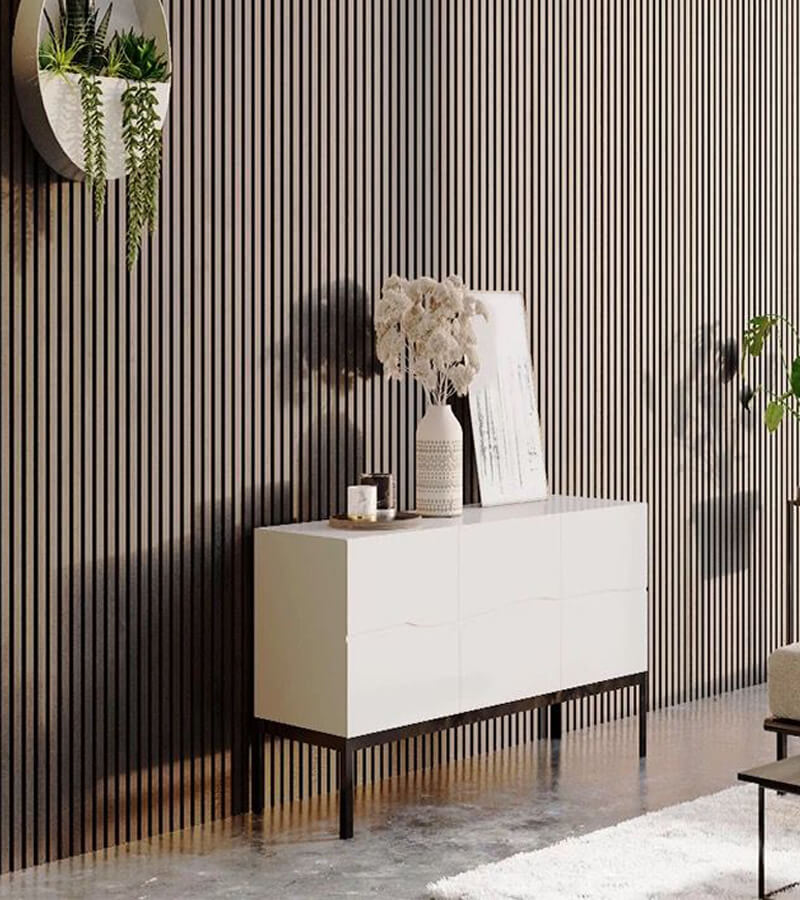Acoustic panels are an essential part of many homes and professional spaces due to their soundproofing properties. But how long do they last, and what affects their durability? Understanding the lifespan of acoustic panels can help homeowners and professionals make informed decisions about their installation and maintenance. In this comprehensive guide, we’ll explore what influences the lifespan of acoustic panels, how to maximize their use, and when to consider replacements.
What Influences the Lifespan of Acoustic Panels?
The lifespan of acoustic panels is influenced by various factors. Knowing these can ensure proper maintenance and long-term satisfaction with your investment.
- Material Quality: The type of material used in acoustic panels is one of the most significant factors in their durability. Panels made from high-quality wood or dense fabric tend to last longer compared to those made from cheaper, less durable materials.
- Environment: Acoustic panels placed in humid or high-moisture areas may degrade faster. Excess moisture can lead to issues such as mold growth or warping in wooden panels.
- Usage: Panels used in high-traffic or frequently rearranged spaces may wear out quicker than those installed in less active environments.
- Maintenance: Regular cleaning and preventive care can extend the life of acoustic panels. This includes dusting, inspecting for damages, and addressing any issues promptly.
Types of Acoustic Panels and Their Lifespan
The lifespan of acoustic panels can vary significantly depending on the type and how they are used. Below is a brief overview of common panel types and their estimated lifespans:
1. Wooden Acoustic Panels
- Average Lifespan: 15-20 years
- Pros: Durable, aesthetic, resistant to moderate wear and tear.
- Cons: Susceptible to warping if exposed to excessive moisture.
Wooden panels are known for their long-lasting nature and appealing look. These panels can be maintained for up to 20 years with proper care, making them a popular choice for homeowners seeking a balance of function and design.
2. Fabric-Covered Panels
- Average Lifespan: 8-15 years
- Pros: Effective sound absorption, customizable.
- Cons: More prone to stains and damage over time.
Fabric-covered panels are versatile and can be tailored to different aesthetics. However, their lifespan is shorter than that of wooden panels due to the vulnerability of the fabric to wear and stains.
3. Foam Acoustic Panels
- Average Lifespan: 5-10 years
- Pros: Cost-effective, easy to install.
- Cons: Less durable and prone to degradation over time.
Foam panels are ideal for those on a budget or in need of temporary soundproofing. While they are effective, their shorter lifespan reflects their lower initial cost.
How to Prolong the Lifespan of Acoustic Panels
Maximizing the lifespan of acoustic panels requires proper maintenance and strategic placement. Here are some actionable tips:
- Regular Cleaning:
- Dust your panels at least once a month to prevent buildup that can degrade material over time.
- Use a vacuum cleaner with a soft brush attachment for fabric panels to maintain cleanliness without damaging the material.
- Monitor Humidity Levels:
- Install panels in rooms with controlled humidity. Consider using a dehumidifier if you live in a region with high humidity to protect wooden panels from warping.
- Check for Damage Regularly:
- Inspect your panels for signs of wear, mold, or damage. Early detection allows for repairs that can extend the panel’s life.
- Avoid Direct Sunlight:
- Prolonged exposure to sunlight can cause fading, especially in fabric-covered panels. Ensure your panels are installed away from windows or direct sunlight.
Common Issues and Solutions
Understanding common issues that arise can help in maintaining the lifespan of acoustic panels. Here’s a breakdown of typical problems and their solutions:
| Common Issue | Cause | Solution |
|---|---|---|
| Warping (Wood Panels) | High moisture/humidity | Install in climate-controlled areas. |
| Staining (Fabric Panels) | Accidental spills/dust buildup | Spot clean and use fabric protectors. |
| Fading (All Panels) | Direct sunlight exposure | Install in shaded areas or use window treatments. |
When to Replace Acoustic Panels
Despite proper care, there comes a time when acoustic panels need to be replaced. Key signs include:
- Visible Damage: Torn fabric, warped wood, or chipped foam are indicators that panels have reached the end of their life.
- Reduced Performance: If sound absorption noticeably decreases, it’s a sign the panels may need replacement.
- Mold or Mildew: Panels that show signs of mold should be replaced promptly to maintain a healthy environment.
FAQs About the Lifespan of Acoustic Panels
1. How long do acoustic panels typically last?
The lifespan of acoustic panels varies by type, with wooden panels lasting up to 20 years, while foam panels may last 5-10 years.
2. Can acoustic panels be refurbished to extend their lifespan?
Yes, in some cases, panels can be reupholstered or repaired to prolong their life, particularly fabric-covered types.
3. Does the installation method affect the lifespan?
Yes, improper installation can lead to issues like loosening or damage over time. Proper installation ensures stability and longevity.
4. Are there eco-friendly options with a long lifespan?
Yes, panels made from sustainable wood or recycled materials can offer a balance of durability and environmental responsibility.
5. What is the best way to clean acoustic panels?
Use a soft cloth for wooden panels and a vacuum cleaner with a brush attachment for fabric panels. Avoid harsh chemicals that could degrade the material.
Conclusion
Understanding the lifespan of acoustic panels and taking proactive measures can make all the difference in extending their usability and maintaining their effectiveness. With the right materials, proper care, and attention to environmental factors, acoustic panels can serve your space effectively for many years.








